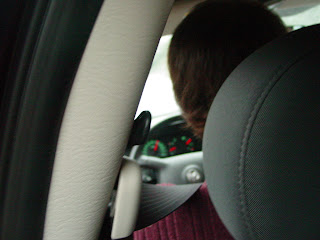HBES 2007
 Yeah, so I know it's a little later than I expected . . . and you're sick of the excuses, haha. Oh well, I might as well report on the 2007 HBES conference now, cause if I wait any longer, it will never get done!
Yeah, so I know it's a little later than I expected . . . and you're sick of the excuses, haha. Oh well, I might as well report on the 2007 HBES conference now, cause if I wait any longer, it will never get done!
Well, as you probably know by now, the Human Behavior and Evolution Society held this year's conference, May 30th - June 3rd, here at the College of William and Mary, and was hosted by the awesome Lee Kirkpatrick and Brandy Burkett! It was exciting! I mean, to have such superstars as Robert Kurzban, David Buss and John Tooby (just to name a few!) under the same roof and so close to home, it was an opportunity that just could not be missed! Fortunately John, from Evolutionary Psychology, and I were able to volunteer our services in exchange for free admission, haha. It was cool though. We mostly helped man the registration desk at various times and also helped answer questions about campus and what not. We met a lot of cool people, including other graduate students interested in evolutionary psych., and we even met the editors of the Journal of Social, Evolutionary and Cultural Psychology, Sarah Strout and Rosemarie Sokol. That was pretty cool, because they recently finished graduate school as opposed to most of the other people that we met. It was nice to get a fresh perspective on graduate school in EP, being editors for a new journal and how to not be too intimidated by big names in the field. By the by, back in April I wrote a post about their new journal . . . if interested, you can find it here.
When not working or mingling, I was able to catch some really good talks. My favorite was that of Hod Lipson, from Cornell, who spoke about Evolutionary Robotics, a field which utilizes evolutionary theory to allow robots to reconstruct their very own body plan! Very interesting. Sadly, John has already beaten me to the punch, haha. Well, that's what I get for not giving my blog the attention that it needs! His post on Lipson's talk can be found here. And he does a good job:"Lipson and his colleagues have found that certain fitness functions can allow robots to model and understand their own structure. Although robots do not yet have what we often refer to as consciousness, they do have the ability to recognize changes in their robotic structure through a process of continuous self-modeling. For example, a robot that has five appendages can recognize when one of its appendages is amputated and it can adapt its behavior to be congruent with its new structure."
Check out the full post!
Well, all in all, I thought the conference was a good experience for me, even though I didn't present any research of my own and I didn't even get to be there for the whole time (my wedding). I just say to myself, "There'll be next time." It was just a good environment for me to be in, intellectually . . . good just to see what is going on in the field myself. Photos from the conference can be accessed here if anyone's interested.




